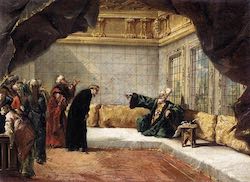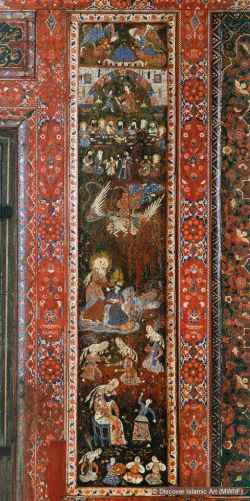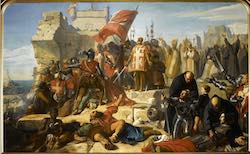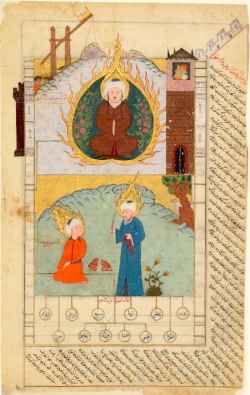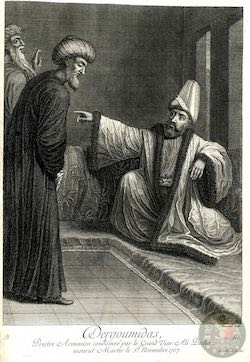Keyword: Ottoman Empire
Le Kurban Bayramı à Istanbul. Le sacrifice entre commercialisation et humanitarisation
in: Un Moyen-Orient ordinaire: entre consommations et mobilités, pp. 206-232
: , .
Le sacrifice dans les traditions turques
in: Sacrifices en Islam: Espaces et temps d'un rituel, pp. 265-285 [open access]
Paris: CNRS, .
The Sacrifice of Isaac. A Christian citizen in Aleppo commissioned the painted panels of the walls of the entrance room in his house. Wood, multi-layered painting (1601-1603)
from: Aleppo
Museum of Islamic Art at the Pergamon Museum Source: [https://islamicart.museumwnf.org/database_item.php?id=object;ISL;de;Mus01;39;en&pageD=N&cp]
After suffering a long siege, Malta finally repels Turks' attack (1565) (1852)
Salles des Croisades, Châteaux de Versailles, Versailles (France)
in: Confessionalization on the Frontier. The Balkan Catholics Between Roman Reform and Ottoman Reality, pp.
Rome: Viella, 2019.
Historia de la Guerra y presa de África; con la destrucción de la villa de Monatzer y Isla del Gozo y pérdida de Tripol de Berbería, con otras muy nuevas cosas.
Naples: Mastre Matia, impresor [Mattia Cancer], 1552.
The sacrifice of Isaac. The Prophet Ibrahim (Abraham) surviving the furnace (above), and preparing to sacrifice his son Ism'il (below), from The Cream of Histories (Zubdat al-tawarikh) by Sayyid Luqman-i 'Ashuri (1585)
from: Sayyid Luqman-i Ashur, Zubdat al-tawarikh, Istanbul, Turkey
Sayyid Luqman-i Ashur, Zubdat al-tawarikh, detached folio, Chester Beatty Library, Dublin
A Gagauz folk adaption of the Karamanlidika poem Abraham’s sacrifice: a comparative linguistic approach
in: Cultural encounters in the Turkish-speaking communities of the late Ottoman Empir, pp. 257-277
Istanbul: Isis, 2014.
Dergoumidas, Prestre Armenien condamné par le Grand Visir Ali Pacha, mourut Martir le 5 Novembre 1707. (1707 - 1708)
from: Ferriol, Ch., Marquis Le Hay & Mour, J.-B. van. Recueil de cent estampes representant differentes nations du Levant, tirees sur les tableaux peints d'apres nature en 1707 et 1708, Le Hay et Duchange, Paris, 1714, engraving n. 85, pp. 44-47; [Also found in: Explication des cent estampes qui representent differentes nations du Levant avec de nouvelles estampes, Le Hay et Duchange, Paris, 1715].

